New colors without shooting lasers into your eyes
Can optical illusions take you outside the human color gamut?
1.
Your eyes sense color. They do this because you have three different kinds of cells on your retinas, which are sensitive to different wavelengths of light.
For whatever reason, evolution decided those wavelengths should be overlapping. For example, M cones are most sensitive to 535 nm light, while L cones are most sensitive to 560 nm light. But M cones are still stimulated quite a lot by 560 nm light—around 80% of maximum. This means you never (normally) get to experience having just one type of cone firing.
So what do you do?
If you’re a quitter, I guess you accept the limits of biology. But if you like fun, then what you do is image people’s retinas, classify individual cones, and then selectively stimulate them using laser pulses, so you aren’t limited by stupid cone cells and their stupid blurry responsivity spectra.
Fong et al. (2025) choose fun.
When they stimulated only M cells…
Subjects report that [pure M-cell activation] appears blue-green of unprecedented saturation.
If you make people see brand-new colors, you will have my full attention. It doesn’t hurt to use lasers. I will read every report from every subject. Do our brains even know how to interpret these signals, given that they can never occur?
But tragically, the paper doesn’t give any subject reports. Even though most of the “subjects” were, umm, authors on the paper. If you want to know what this new color is like, the above quote is all you get for now.
2.
Or… possibly you can see that color right now?
If you go here, a little animation will open. Please do that now and stare at the tiny white dot. Weird stuff will happen, but stay focused on the dot. Blink if you must. It takes one minute and it’s probably best to experience it without extra information i.e. without reading past this sentence.
The idea for that animation is not new. It’s plagiarized based on Skytopia’s Eclipse of Titan optical illusion (h/t Steve Alexander), which dates back to at least 2010. Later I’ll show you some variants with other colors and give you a tool to make your own.
If you refused to look at the animation, it’s just a bluish-green background with a red circle on top that slowly shrinks down to nothing. That’s all. But as it shrinks, you should hallucinate a very intense blue-green color around the rim.
Why do you hallucinate that crazy color? I think the red circle saturates the hell out of your red-sensitive L cones. Ordinarily, the green frequencies in the background would stimulate both your green-sensitive M cones and your red-sensitive L cones, due to their overlapping spectra. But the red circle has desensitized your red cones, so you get to experience your M cones firing without your L cones firing as much, and voilà—insane color.
3.
So here’s my question: Can that type of optical illusion show you all the same colors you could see by shooting lasers into your eyes?
That turns out to be a tricky question. See, here’s a triangle:
Think of this triangle as representing all the “colors” you could conceivably experience. The lower-left corner represents only having your S cones firing, the top corner represents only your M cones firing, and so on.
So what happens if you look different wavelengths of light?
Short wavelengths near 400 nm mostly just stimulate the S cones, but also stimulate the others a little. Longer wavelengths stimulate the M cones more, but also stimulate the L cones, because the M and L cones have overlapping spectra. (That figure, and the following, are modified from Fong et al.)
When you mix different wavelengths of light, you mix the cell activations. So all the colors you can normally experience fall inside this shape:
That’s the standard human color gamut, in LMS colorspace. Note that the exact shape of this gamut is subject to debate. For one thing, the exact sensitivity of cells is hard to measure and still a subject of research. Also, it’s not clear how far that gamut should reach into the lower-left and lower-right corners, since wavelengths outside 400-700 nm still stimulate cells a tiny bit.
And it gets worse. Most of the technology we use to represent and display images electronically is based on standard RGB (sRGB) colorspace. This colorspace, by definition, cannot represent the full human color gamut.
The precise definition of sRGB colorspace is quite involved. But very roughly speaking, when an sRGB image is “pure blue”, your screen is supposed to show you a color that looks like 450-470 nm light, while “pure green” should look like 520-530 nm light, and “pure red” should look like 610-630 nm light. So when your screen mixes these together, you can only see colors inside this triangle.
(The corners of this triangle don’t quite touch the boundaries of the human color gamut. That’s because it’s very difficult to produce single wavelengths of light without using lasers. In reality, the sRGB specification say that pure red/blue/green should produce a mixture of colors centered around the wavelengths I listed above.)
What’s the point of all this theorizing? Simple: When you look at the optical illusions on a modern screen, you aren’t just fighting the overlapping spectra of your cones. You’re also fighting the fact that the screen you’re looking at can’t produce single wavelengths of light.
So do the illusions actually take you outside the natural human color gamut? Unfortunately, I’m not sure. I can’t find much quantitative information about how much your cones are saturated when you stare at red circles. My best guess is no, or at best just a little.
4.
If you’d like to explore these types of illusions further, I made a page in which you can pick any colors. You can also change the size of the circle, the countdown time, if the circle should shrink or grow, and how fast it does that.
You can try it here. You can export the animation to an animated SVG, which will be less than 1 kb. Or you can just save the URL.
Some favorites:
If you’re colorblind, I don’t think these will work, though I’m not sure. Folks with deuteranomaly, have M cones, but they’re shifted to respond more like L cones. In principle, these types of illusions might help selectively activate them, but I have no idea if that will lead to stronger color perception. I’d love to hear from you if you try it.



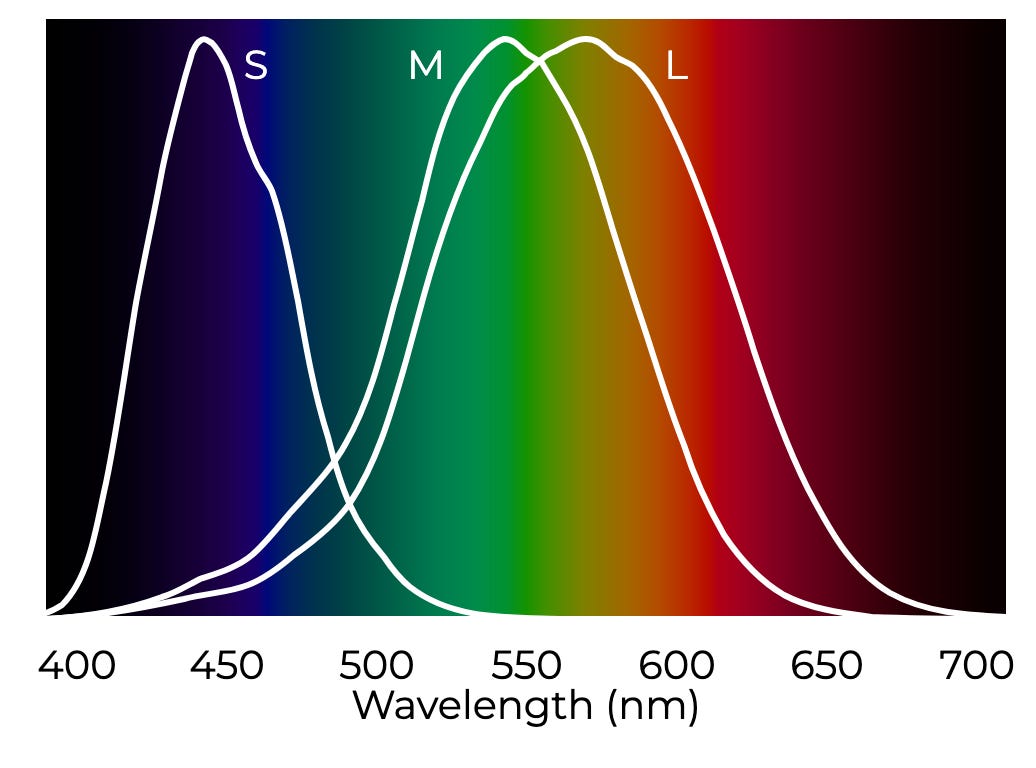


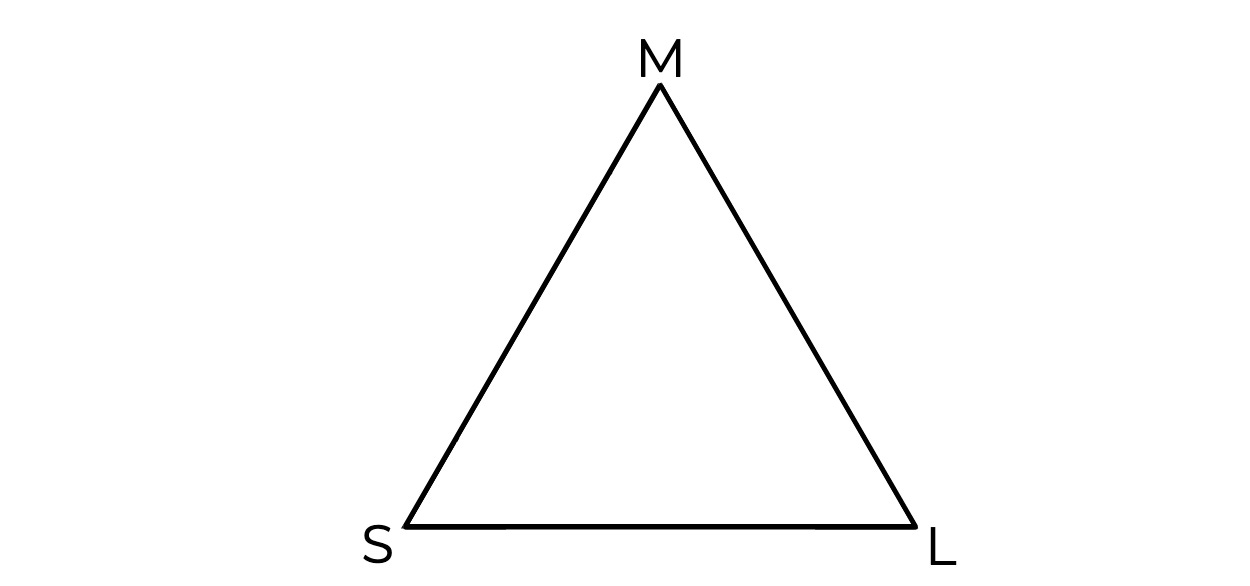
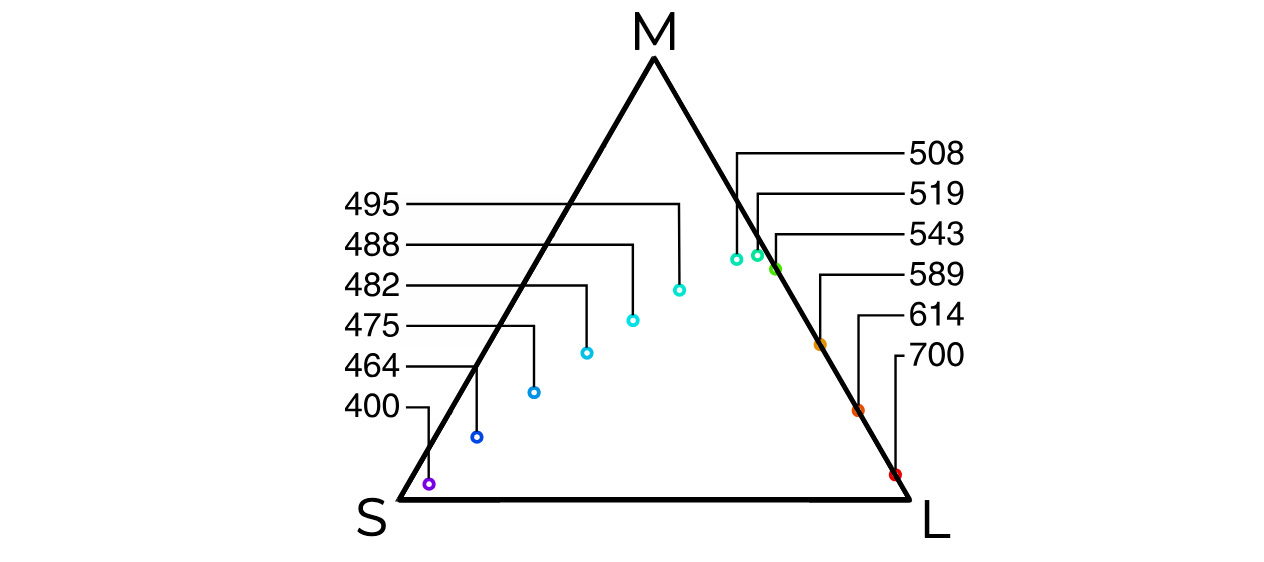
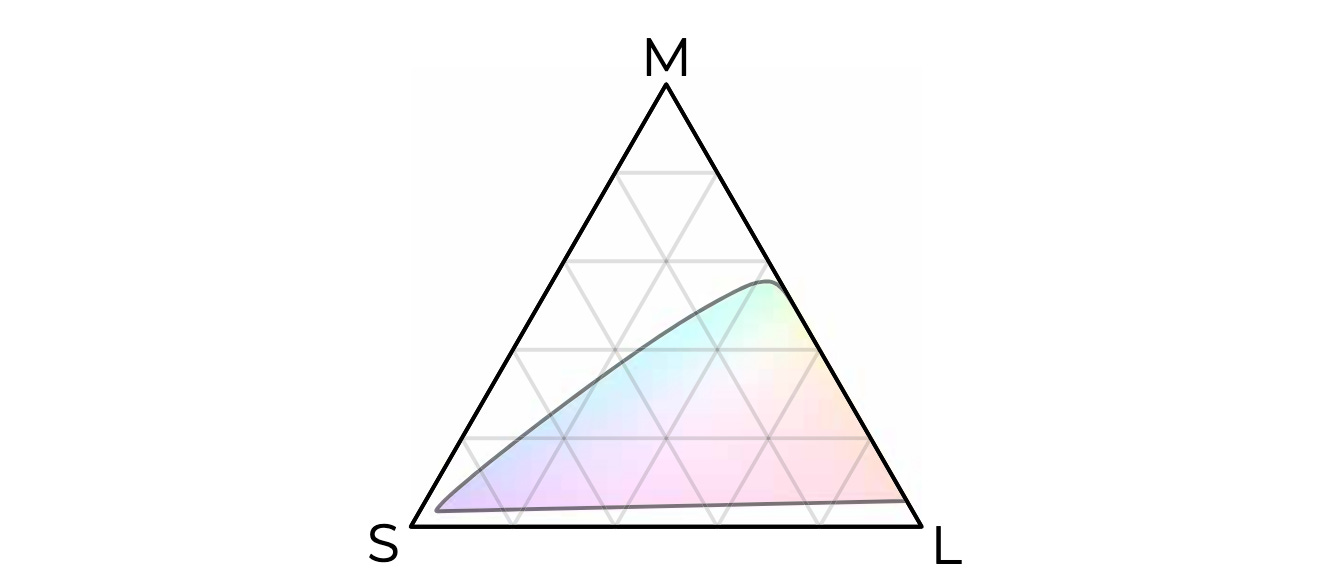
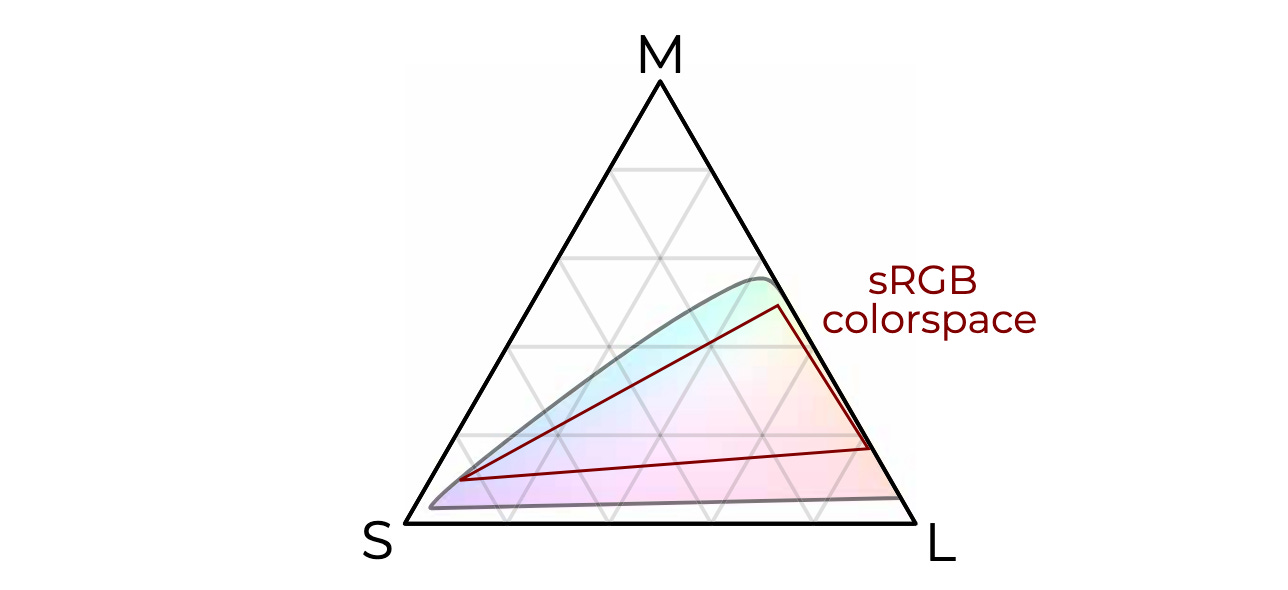
This is super cool; somewhat related, this lecture is pretty interesting: https://m.youtube.com/watch?v=4GJ4UQZvCNM
Edit: realized I should maybe explain why: title of the talk is “Category Theory for Neuroscience.” After introducing lots of math, toward the end the guy explains using category theory to dissolve the inverted spectrum problem. (Idea that “maybe my red is your green whooooaaa”)
I'm pretty sure you've seen this Wikipedia page, but because you didn't mention it: Impossible Colors: https://en.wikipedia.org/wiki/Impossible_color
The illusion you showed is called a "Hyperbolic color" (impossibly highly saturated), in the class of "Chimerical colors". There are other kinds too!